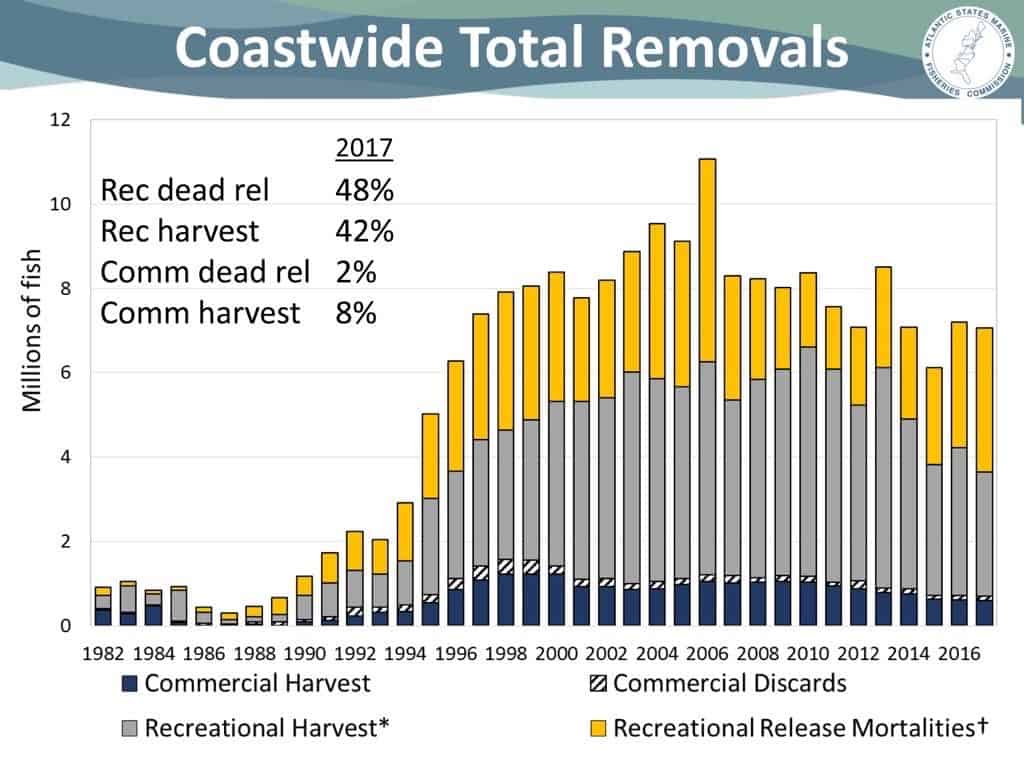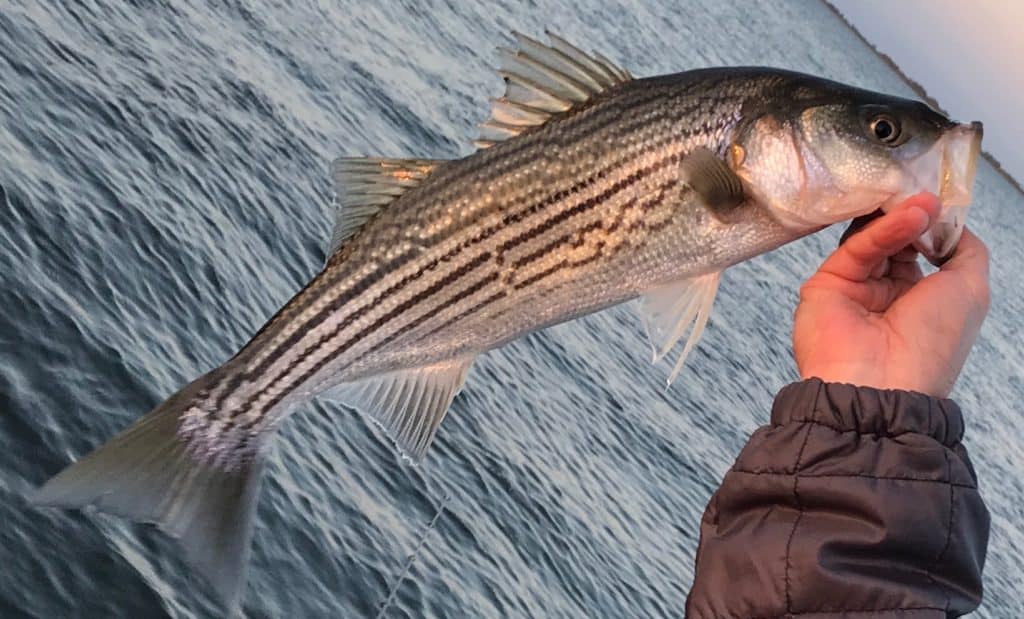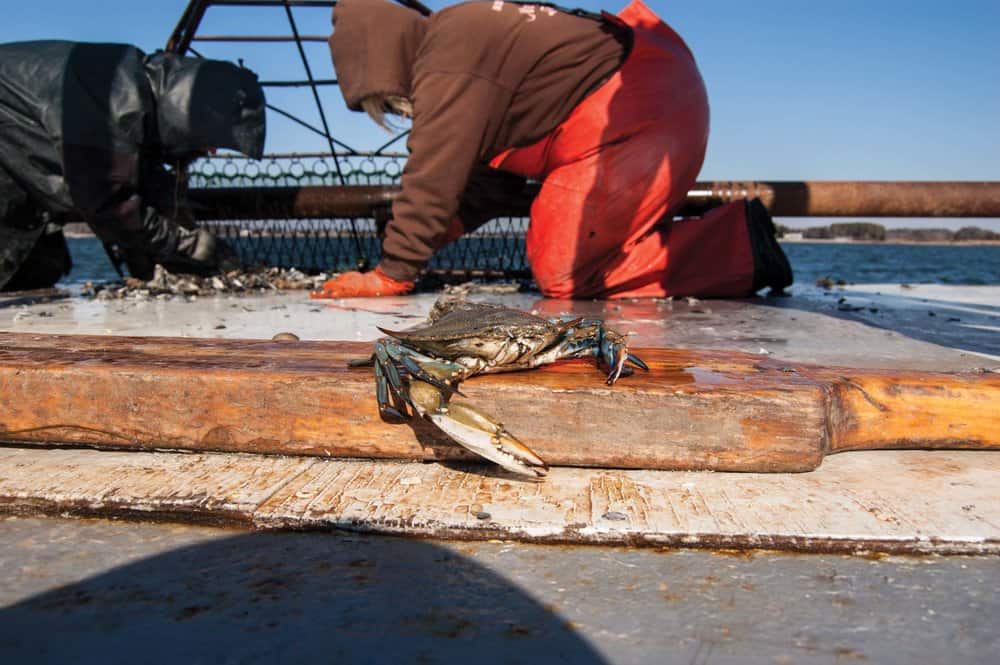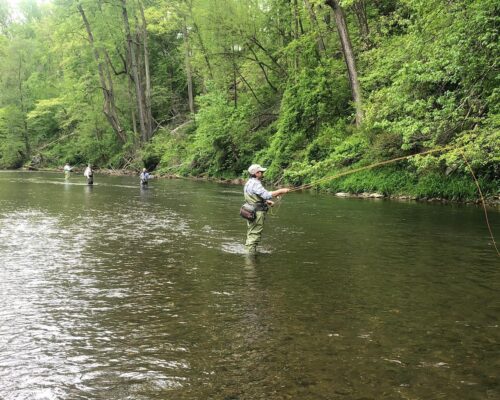Those of us who fished in the late 1970s and ‘80s, when the striped bass population collapsed due to overfishing and pollution, are getting a sense of déjà vu as we head into the 2019 season. We recall that the decline was so severe that the 1979 Congress enacted the Emergency Striped Bass Act to force and fund efforts to assess the situation and develop restoration strategies. Five years later, Maryland Governor Harry Hughes declared a moratorium on commercial and recreational striped bass harvests. Eventually, the other striped-bass states followed suit. It took ten years of research, restraint, money, restoration, and angst before the scientists could say the fishery was recovered. It was painful and embarrassing that we didn’t have the institutional courage and sense to act earlier. Maybe it could have been avoided. But that’s not how our unique Jeffersonian democracy works, really. Those who show up at public and private meetings and shout the loudest often get their way, while those who stay home forfeit their position on the matter. Thus, those who might suffer short-term losses in the bargain win a battle, while the Bay and its denizens get lost in the shuffle. The conservation can gets kicked down the road.
In 1996, the Maryland Striped Bass Young-of-the-Year Survey hit its highest point since the beginning of the study in the 1950s. The count has tumbled in fits and starts down to disturbing lows in 2006, 2008, 2012 and 2016. Between 2014 and 2017, the average annual recreational haul dropped from 25 million to 16 million pounds. Some of that is a result of modest tightening of the regulations. Note: 2015 brought an encouraging spike in the young-of-the-year number, which shores up an argument for not panicking…yet.
Signs of trouble appeared to some of us in 2013 when every angler headed to the mouth of Eastern Bay to enjoy “great fishing” where the robust 2011 class of juvenile stripers was trapped by the summer dead-zone of oxygen-depleted main-stem Chesapeake waters. The fish got hammered. I was there with everybody else, catching and releasing, and doing what I thought was the right thing. It might have been the wrong thing.

Anglers release more than 90 percent of the fish they catch due to size and creel limits and, for a fringe of thoughtful anglers, conservation concerns—roughly 12 million fish in 2017. Fisheries analysts use a nine-percent mortality rate for released fish, which in 2017 amounted to 48 percent of the total number of dead stripers, including all recreational and commercial harvests and releases. The nine-percent estimate is an average of survey results in various conditions and fish-handling techniques. What seems lost in the discussion is that, in the heat of summer, water and air temperature differentials produce very high release mortality rates. It’s probable that many if not most of the fish we photographed, revived and released to swim away in Eastern Bay that summer didn’t survive.
Results of a new striped bass population assessment released in February indicates that the fishery is shaky. The female spawning stock is below the safety threshold and it is “overfished.” Virginia, almost immediately, took a slightly symbolic action to curtail the damage by cancelling its modest spring trophy season. Maryland’s comparatively huge trophy season, which targets stripers going to and from their natal spawning rivers, kicked off as usual with no indication that the state will do anything this year. Eventually, the other states at the Atlantic States Marine Fishery Commission table may force the issue as corrective action becomes a reality.
The process for sorting this out in favor of the resource will be complicated and fraught with pressure from those with immediate stakes in the fishery.
The blame-game is heating up, as usual. There’s plenty to go around, and none of it is helpful.
All we can do is stay informed, get involved, and consider the future before spouting opinions. Chesapeake Bay Magazine and the Bay Bulletin will continue to follow the issues.
Changes are coming.




